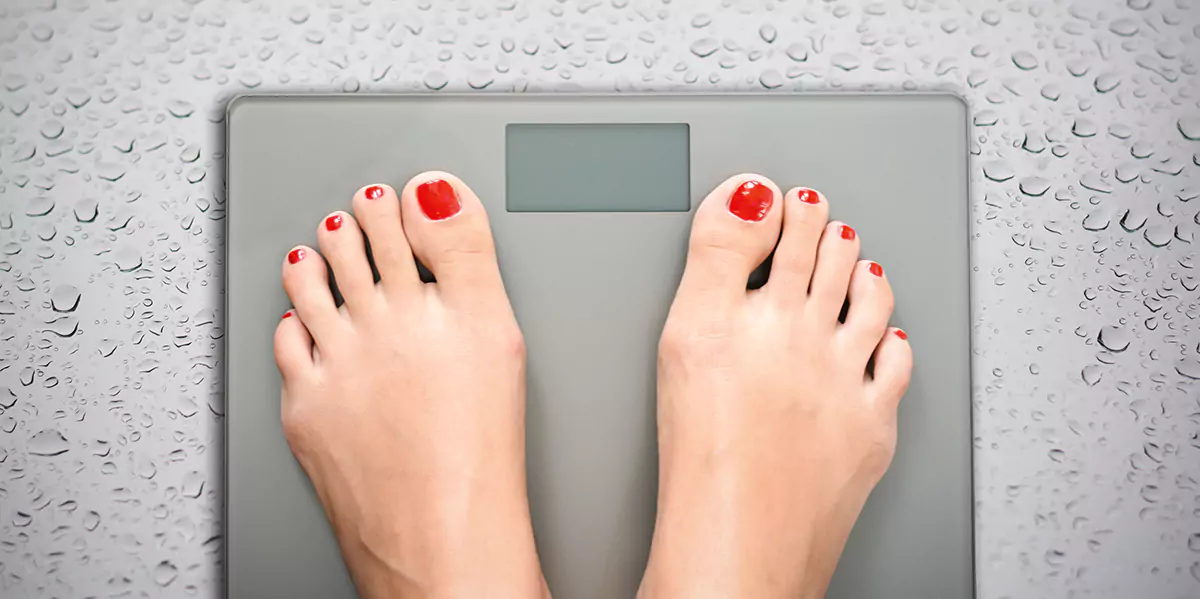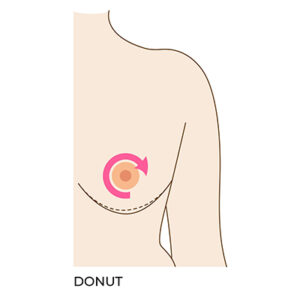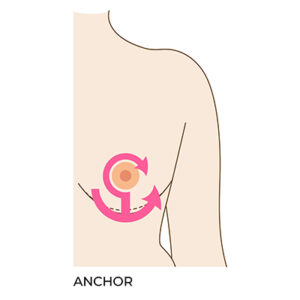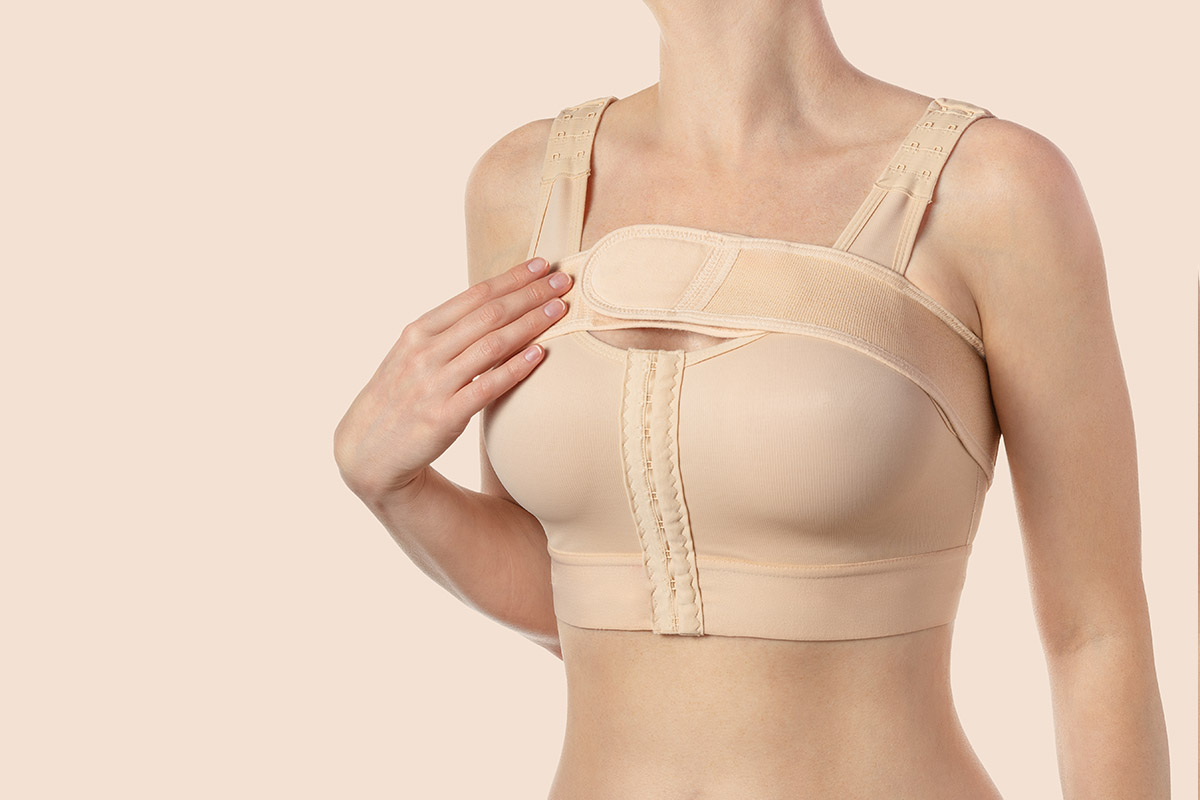
Understanding Breast Reduction Surgery
Breast reduction deals with surgically removing excess breast fat, glandular tissues, and skin to make your breasts smaller, lighter, and give them a better shape and proportion to your body.
It is an increasingly popular procedure among women: According to the British Association of Aesthetic Plastic Surgeons (BAAPS), breast reduction surgery was the second most popular type of breast surgery that women in the UK underwent in 2023.
Breast reduction is a functional breast surgery focused on helping you manage the challenges you may be experiencing with big, heavy breasts. Additionally, it also corrects breasts that are unequal in size and enhances their appearance, allowing you to improve your quality of life.
If you’re someone with big breasts, here are some common experiences that you may relate to:
- Acute back, neck, and shoulder pain: The weight of your breasts puts too much pressure on your back muscles and your spine, changing your posture and causing inflammation in your spinal discs.
- Limitations while exercising: With kids or without, your breasts are making it really difficult to include play into your lifestyle. You also think twice about high-impact activities such as exercising because they get in the way and put strain on your rib cage and ligaments.
- Redness under the breast, chafing, and irritation: Bra cups are too small or the straps dig into your shoulders. The constant rubbing against clothing causes chafing and inflammation. It makes your underbust sweaty, itchy, and uncomfortable, and it gets worse in the summer!
- Trouble breathing while lying down: Your breasts weigh down and press into your lungs when you lie on your back, depriving you of oxygen, leading to breathlessness and suffocation.
- Feelings of self-consciousness and low confidence: Supportive bras for you don’t seem to exist! You’re also tired of always going one size up for clothes that sit oddly on your frame.
However, any breast surgery is a big decision and it’s important to understand everything it entails – pre- and post-op, the risks associated with it, and life after surgery – to make an informed decision.
The Right Cosmetic Surgeon, and Where to Find Them
So how do you find the surgeon who would best understand your needs and provide you with the care you require? The first thing to do is check whether your surgeon is:- An accredited plastic surgeon who’s on the GMC specialist register for plastic surgery.
- A surgeon certified in breast reduction surgeries by the Royal College of Surgeons, England per the cosmetic surgery certification scheme introduced in 2017.
- Check with the Care Quality Commission to see if the facility where the surgery will take place is registered.
- You can also check the British Association of Aesthetic Plastic Surgeons (BAAPS) or the British Association of Plastic Reconstructive and Aesthetic Surgeons (BAPRAS) to see if the surgeon is a full member of their specialist registry.
Your First Face-to-Face Consultation
Next, make an appointment and get a consultation for breast reduction surgery. Usually, the first consultation for a breast reduction procedure takes around 30 minutes. Your surgeon may ask you to consult your general physician if they think any medical condition needs to be considered. They may also advise a second consultation a few weeks before surgery to ensure you’re comfortable and have a complete understanding of the procedure. During the appointment, the surgeon may:- Ask about your general health, challenges you experience and concerns you have with the size and shape of your bust, and your expectations from breast surgery.
- Examine your breasts and your overall physique to assess your proportions, and take measurements and photographs.
- Explain surgery techniques, expected outcomes, potential risks, and recommend what’s best for you.
Conditions That Impact Your Breast Reduction Procedure
In case you make the decision to go ahead with the breast reduction surgery, it will usually be scheduled within three to four weeks from the consultation. The clinic will kick-start the pre-surgery process with an assessment over the phone, and request for basic lab tests to be done at least two weeks prior to the scheduled surgery. If there are other tests prescribed by your general physician, you will need to get them done as well.| Weight | If you’re planning on losing weight, you may be advised to do it prior to the surgery since weight loss may reduce the size of the breast or alter the shape. |
| If you’re overweight, you may be asked to lose weight before the surgery. This is because high BMI has an influence on the viable surgical procedures for creating an ideal breast shape, while also increasing the risk of complications. | |
| Family Planning | If you’re planning on growing your family, you may be advised to delay the surgery since hormonal fluctuations during pregnancy and breast-feeding may cause changes to your breast size. |
| Age | If you’re above 40, you may be asked to get a mammogram to ensure there are no abnormalities or causes for concern about your breast tissue. |
| Habits | If you’re a smoker or if you vape, you may be asked to stop for at least 6 weeks before the operation since it can impair healing and increase the risk of infection. |
The Day of Surgery: What to Expect
On the day of your breast reduction surgery, you will be asked to come into the medical centre one or two hours ahead of your surgery for preparation.
| Surgery Day Preparation for Breast Reduction Surgery | ||||
| Step 1: Complete the paperwork provided to you as well as consent to the breast surgery. | Step 2: Have basic measurements taken – weight, height, etc. You might be given a pregnancy test as well. | Step 3: Change into the operation gown provided to you. | Step 4: Meet your surgeon and the anaesthetist. | Step 5: Go to the operation theatre and have a peripheral intravenous line (IV line) or a cannula placed on the upper portion of one of your hands. |
Your surgeon will draw marks on your breast to define the new breast size and shape, and they will use these marks during the operation to guide them in removing breast tissue and repositioning the nipple and areola.
The anaesthetist will explain to you how he will be performing the anaesthesia.
Note: This type of breast surgery is most commonly done under general anaesthesia and you’re asleep for the entire duration of the surgery. In addition to general anaesthesia, local anaesthesia may be used to reduce pain at the incision site.
Breast Reduction Surgical Procedures: Types and Techniques
During your breast reduction surgery consultation, your surgeon will explain their choice of technique that will be used. This is based on the degree of reduction you’re hoping for and the scar pattern you’re most comfortable with. A breast reduction procedure usually takes between two to three hours to complete.Step 2: They may reposition the nipple and areola.
Step 3: Skin is brought down to surround the newly positioned nipple and areola, giving your breast a new shape.
Step 4: At the end of your breast reduction procedure, the breast tissues and skin are stitched together, usually with dissolvable stitches. As it heals and depending on the technique used, you can expect to find scars in different places.
Here are some of the techniques that may be recommended and the consequent scar pattern you can expect.
Anchor-shaped or Inverted-T
This is the most common breast reduction surgery approach and is used when a bigger incision is to be made to remove excess tissue. With this method, you may find an anchor-shaped or an inverted-T scar under your nipples and down the lower part of your breast below the nipple.

Circumareolar or Donut-shaped
In this technique, an incision is made by the edge of the areola.
Post-Operative Care and Immediate Recovery
Initially and just after a breast reduction surgery, some firmness, tenderness, and bruising in the breasts are to be expected. Swelling is normal and usually eases within the first two weeks.
Your breasts will be covered in bandages and put in a surgical bra that closes in the front. A tube might be placed under each arm to drain excess blood and fluid, and you may be prescribed medicines to manage your pain and decrease the risk of infection.
You may also be asked to come to the clinic periodically so that the surgeon or the nurse can clean and dress your wounds.
This means no heavy lifting, stretching, or strenuous exercise. Recovery from a breast surgery of this nature takes at least 6 weeks. The scars will heal and then fade over time.
Long-Term Recovery Process
For a complete and holistic recovery from a breast reduction procedure, the most important thing is to give yourself time. Your first few weeks are critical and how you manage them can set the tone for your recovery journey, limit the risk of complications, and give you the best result.
Weeks 1 – 2: These are most delicate and it’s best to take time off from work.
Ideally, for the first few days have someone at home to help you so that you get enough rest. You will be allowed to shower 48 hours after your surgery and your surgeon will show you how to dress your incisions. It’s important to keep the incision sites clean and wear the surgical bra customised for you. Wear the bra as instructed by your surgeon and make sure that the elastic band around the chest is pulled down to prevent irritation around the incision sites.
As you progress from Week 1 into Week 2, the swelling should start to come down, but there still might be some bruising, numbness, and localised pain. Avoid anti-scar lotions and ointments as you heal. Sleep with your head elevated to limit movements that might strain your chest area and cause more swelling.
Week 3 – 4: You will experience life coming back to normal for you.
Side effects from the surgery, such as pain and numbness, will begin to subside. You will still need to avoid straining yourself and engaging in activities or sports until the incision sites heal completely.
Into Week 4, the discomfort should be much less and you may begin to resume your regular daily activities. But be mindful to go easy on yourself.
Week 6 is a milestone in the recovery journey.
Around this time, the final result of your breast reduction surgery begins to become visible and clothes fit more comfortably.
By month 2, you may be able to resume your daily routine with more enthusiasm including physical activities, exercising, and sports.
What to Watch for After Breast Reduction Surgery
As you recover from your breast reduction surgery, it is important to follow up with your surgeon in order for them to monitor your healing. You can schedule these follow-up appointments after you’re discharged from the hospital or clinic.
A few things you can monitor yourself include:
Nipple sensitivity: You may experience hypersensitivity, pain, or total numbness in the nipples which can last anywhere between 6 months to a year. You may also experience a different degree of sensation in your nipples when sensitivity returns.
Pain: You may experience shooting pain or a burning sensation in the breast after your breast reduction procedure. This is due to nerve bruising that happens during surgery and is likely to go away within the first month. If the pain continues, it’s best to consult your surgeon.
Bleeding: After any breast surgery, it is common for the breasts to be bruised and for blood to collect under the skin. Your breasts may also feel swollen and tight.
Infection: If proper care is taken during post-operative care, the risk of infection is lowered. However, if infection does happen, it’s essential to consult your surgeon for a prescription of antibiotics and if needed, an enhanced regimen of dressing.
Scars: Most scars from breast reduction surgeries begin to heal by the 6th week. They may look like fine lines and fade within 12 to 18 months. However, the time frame may vary from person to person and if you scar easily, it’s a good idea to bring it up with your surgeon before the procedure.
Allergic reactions to stitches: Reactions to surgical materials is rare, but it is always better to be prepared. Ensure your surgeon is aware of any known allergies you may have.
As a rule of thumb, notify your surgeon if and when you notice symptoms that are elevated or different from what your surgeon has discussed with you.
Benefits of Breast Reduction Surgery
The benefits of breast reduction surgery may be life-changing and go far beyond the physical. That being said, the physical changes and their contributions to your quality of life are in no measure any less significant.
You may experience a new boost in your confidence when the size of your breasts are proportional to your body, you can engage in physical activities without any hindrance, and should no longer experience back or neck pain. A breast reduction procedure helps improve perceptions of body image, enhances your wardrobe options, and decreases social anxiety.
Life After Breast Reduction Surgery
In a 10-year period starting from 2012, 50,000+ women have undergone a breast reduction procedure in the UK. While breast reduction surgery is often successful, you may notice that your final result is significantly impacted by the lifestyle changes you introduce. For optimal and long-term results, follow your surgeon’s aftercare instructions, and maintain a healthy diet.
If you’d like to know about how to start on this journey, make an appointment with our specialist surgeon for personalised guidance and care.










